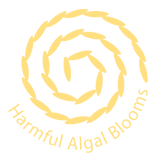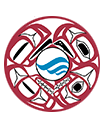HABs Information
Nearly every year, harmful algal blooms (HABs) hurt the economies of the coastal communities in Washington and Oregon that depend on shellfish harvesting. These communities rely on the thousands of people who come to the coast to collect their recreational limit of clams. Occasionally, as in 2015, the entire Pacific Northwest region experiences a major HAB event — caused by species of Pseudo-nitzhscia algae — that forces the closures of both razor clam and Dungeness crab harvests. Species of this microscopic algae can produce domoic acid which makes shellfish dangerous to eat.

NWFSC/NOAA
HABs can lead to closures of recreational and commercial fisheries, which can cause serious economic impacts to coastal communities.
Harmful algal blooms can impact the Dungeness crab fishery, which is the most valuable fishery on the U.S. Pacific West Coast. Dungeness crab eat clams, crustaceans, small fish, and just about anything that they can find that other predators have left behind. Clams and small fish, in turn, eat algae, including the harmful algae Pseudo-nitzhscia which produces domoic acid. Domoic acid cannot be destroyed by cooking, so management of this fishery during harmful algal blooms is vitally important to make sure crab are safe to eat. During HAB events, crab caught by commercial fishers are tested for toxins before they are sold to consumers.
In addition to economic detriment to the region from harmful algal blooms, shellfish harvest closures can cause profound social and cultural impacts to tribes and other coastal communities, even long after the bloom has ended.
Is Shellfish Safe?
Washington Shellfish Safety Information |
Oregon Shellfish Closures |
Additional Resources
NANOOS HABs Info
Washington Dept. of Health Marine Biotoxins Overview
2015 Toxic Algae Bloom Might be Largest Ever
Marine Toxins Stop Northwest Shellfish Harvesting
Deadly Plankton Invasion Takes Toll on Fish

